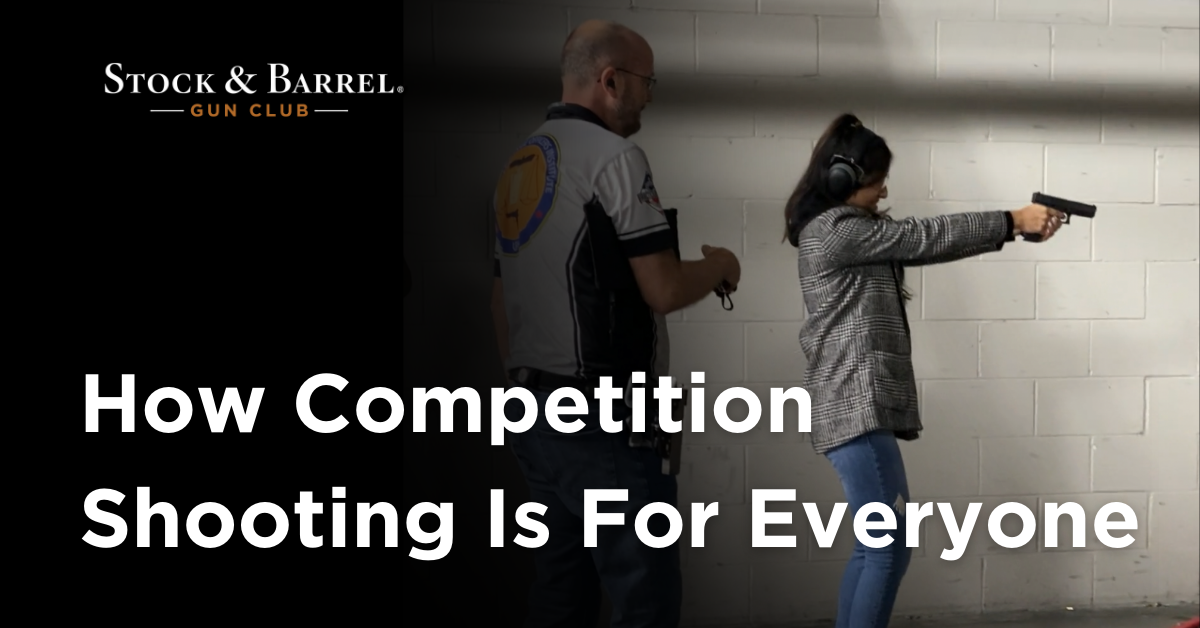When you mention March Madness, the notion of rivalries, competition and the best of the best going for the title is what comes to mind. These are also many of the same thoughts that surround competitive shooting. What isn’t discussed, which we’ll bring to light here, is why shooting competitions are helpful on multiple levels. No matter what walk of life you come from or what tools you bring, competition will greatly impact your confidence and performance on demand with a firearm.
Many people are intimidated by the idea of shooting competitively. The “highlight culture” of social media has given a lot of folks the idea that if they can’t show up with name-brand gear and take a Top 3 prize, they shouldn’t bother showing up at all. This couldn’t be farther from the truth. There are classes and matches for all skill levels, and many people who compete aren’t concerned with the prize table, but with pressure-testing the gear they’ve purchased and the competency they’ve developed through routine practice. Running your firearm through one or more matches will give you a good barometer of how it works for you, and an objective way to judge your skill level.
If you’re interested in competing for the first time and you might not be sure where to start? Don’t worry, read on for a quick overview of what to expect and what you’ll need.
Finding a Match
The first thing to do is locate a range that’s close enough to you to be reasonable. Sometimes that will require a good bit of driving so plan accordingly. Showing up to your first match late is never a good look. Next, find the range’s calendar and look for keywords such as, “USPSA” (United States Practical Shooting Assoc) and “Pistol” for scheduling. Many ranges for new competitors will also require some form of training class not just for your learning but also for insurance purposes. Make sure to attend that course before showing up to your first match. Lastly, if you can find the time to go to that range beforehand to understand the layout and have a staff member explain a bit about how it runs that’s highly advantageous. Here you can learn more about the leagues that Stock & Barrel offers.
Guns, Ammo, and Holsters
Aside from basic safety gear, almost every competition will require three main pieces of equipment: a firearm, ammunition, and a holster. Your firearm should fit you individually. Just because your family member recommended the firearm they carried in the military or in a law enforcement capacity doesn’t mean it’s right for you. Taking the time to visit a store or two and to try out different things just like shopping for a car is the right choice. It’s a good idea to have at least three magazines for your firearm of choice. Our rental counter is a great place to cost effectively & conveniently try out different firearms.
Ammunition is straightforward — there are two kinds, broadly speaking. You have range ammunition (also referred to as ball or practice ammunition) and you have carry or defensive ammo (which are typically hollow point or ballistic tip). While we strongly recommend breaking in your firearm with several magazines’ worth of your carry or defensive ammo, always shoot competition with range or practice ammo. Not only will your wallet thank you but, if you shoot carbine competition, your defensive ammo may contain a steel tip or core. Many ranges prohibit the use of steel-core ammo – especially against steel targets common in action shooting matches.
Choosing a holster can be just as complicated and overwhelming as choosing your first firearm. Your holster should be made from rigid materials and fit your firearm snugly — not so loose that it can pop out inadvertently, and not so tight that removing it from the holster takes serious effort or compromises safety. It should attach to your belt securely with clips or loops. It should also be easy to re-holster your firearm without fear of something getting caught inside the holster.
If you don’t already own a holster, and are interested in shooting a match, understand that some competition leagues have restrictions on what kind of holster you can use. For example: shoulder holsters are strictly forbidden in most competitions for the reason that, if the firearm is loaded and holstered, as you draw it everyone behind you has a loaded firearm pointed at them. If you’re unsure, ask a range employee who the match coordinator or match director is, and how you can reach them with questions. The range may even have competition guidelines on a poster or fact sheet that’s readily available.
Eye and Ear Protection
Ear Protection is another somewhat complex topic. There are two types, passive and active. Passives are the earplugs that we’re all used to including foam and custom molded ear plugs. The advantage of passive is no need for batteries and the custom molded ones are quite comfortable. Active is a noise-cancelling system utilizing either earmuffs or earbuds. The big plus for active is they tone down loud sounds like gunfire but allow you to hear voices quite clearly. Actives are more expensive but if you shoot often especially indoors, they are highly advantageous.
Eye protection needs to cover your eyes and specifically form around your face. What you don’t want is a little bit of something getting in you eyes from over the top, sides or bottom of your glasses. For indoor gun ranges it’s highly recommended to not wear sunglasses.
Other Recommended Gear
On the day of the match, something that can be easily overlooked but is quite important is clothing choice. Starting from the feet and working up, for indoor shooting ranges close-toed shoes with good traction on the soles is vital. Slick floors are common at indoor ranges and taking a spill on a concrete floor will leave a mark. More importantly, footwear is a big contributor to the safety rules. If you fall and the muzzle of your loaded firearm is pointed in the wrong direction that’s a serious mistake.
Working our way up, a pair of pants, shorts, or skirt that can accommodate a belt are vital. How else are you going to wear the holster for your firearm? It’s also a good idea to add some spare magazine pouches or carriers to your belt, or at least have pockets you can use to carry a few extra mags. Your top should be comfortable and loose to accommodate fast upper body movements. Low-cut tops can become a safety hazard. If hot brass goes down the front of your shirt as you’re moving, the immediate reaction can cause dire safety mistakes.
The Path to Proficiency
The choice to compete isn’t an easy one at the beginning, but it will get easier once you take the first step. The only question is, are you happy with your set of skills or do you see the need for more? With Stock and Barrel as your guide you can’t go wrong.
You May Also Be Interested In Reading…





